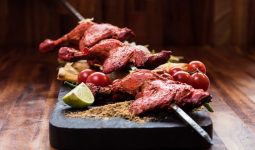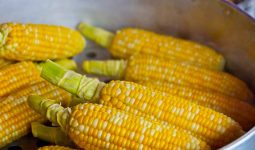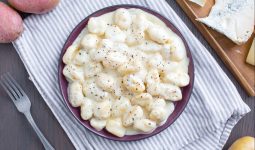Today, there are wide varieties of Chinese noodles. They come in different sizes and shapes, and their method of preparation and the component of their seasoning differs, albeit they are all similar in certain ways.
Nevertheless, most types of Chinese noodles are known to be long and uncut. According to Chinese tradition, long noodles are a symbol of long life. Perhaps that is why they usually serve long noodles during birthday celebrations.
In this article, we will be examining ten different types of Chinese noodles. Keep reading as we take a worded walk through China.
1. Biangbiang Noodles
The Chinese widely consume biangbiang noodles, which are made from flour, salt, and water. They are famous for their delicious flavor and the way they got their name.
This type of Chinese noodle is also called a belt noodle because of its width and length. The origin of its name stems from when noodles were handmade.
At that time, during production, when the noodles are pulled and moved back and forth, it produces the sound “biang biang,” and from that onomatopoeia, the name was born.
That’s an exciting tale, right? When you slurp down the “biang biang” noodle next, remember that story and take an onomatopoeic trip to history.
The noodles can be seasoned with any spice of your choice, consumed with vegetable toppings, or poured into the soup and eaten with soy sauce toppings.
2. Egg Noodles
Egg noodles are made from egg, water, and wheat flour. They are long and thin, have a chewy texture, and are sometimes round or flat.
Among the different types of Chinese noodles, the egg noodle is loved by many because it has a springy, chewy consistency.
Because of the egg component, they can be prepared easily and hardly stick to the pan. They are popularly called chow mein.
The noodles can be stir-fried with vegetables and meat or served with sauce toppings. It is worth noting here that this noodle has imitations in the markets.
The replica is usually coated with coloring to tint the noodles instead of the egg. Hence, assessing the ingredient tags and brand is advisable to ascertain that you are getting the real deal.
3. Wonton Noodles
Among the different types of Chinese noodles are wonton noodles, which are traced to the Cantonese people.
Also made from egg and flour, this Chinese noodle is carefully cooked with water as it gets slippery quickly.
Unlike most Chinese noodles, the wonton noodles are prepared with less spice and oil, reflecting the Cantonese people’s eating style, which prefers a mild flavor.
Considering that wonton soup originates from this part of China, it is normal that the sauce is known as less spicy.
Consequently, it could be a refreshing choice for individuals who don’t want something spicy. Usually, a bowl of wonton noodles contains noodles and soup.
Wonton is a type of Chinese noodle with a hilarious translation: swallowing a cloud.
It’s hilarious, right? The next time you are hungry and craving something filling, try “swallowing a cloud” (wonton) noodles.
4. Udon Noodles
Udon noodles are one of the many types of Chinese noodles. They come in different shapes and sizes, but two things about them never change: one, they are thick, and two, they have a signature white color.
Udon noodles have a dense, chewy texture and little flavor. They are commonly served in hot broth and are considered satisfying. However, they can also be served cold or incorporated into noodle salads.
5. Dandan Noodles
Like some of the different types of Chinese noodles examined so far, dandan noodles are long. But unlike the thick udon noodle, dandan noodles are thin.
The noodle is generally spicy, and some people find the spicy taste addictive. Little wonder, lots of people consume the dandan noodles.
There is a juicy story here concerning the origin of the noodles’ name. Years ago, street hawkers sold the dish to passersby from two baskets carrying noodles and soup.
These two baskets were attached to a pole at either end, and the street vendors would hold the pole over the shoulder.
As time passed, the local people began calling the noodles “dandan” noodles, concerning the dramatics employed by the street vendors.
The name translates directly as “noodles carried on a pole” but may be better translated as “peddler’s noodles.”
As time passed, the noodles became a favorite of the locals as they were inexpensive and tasty. When next you take a slurry slosh of Dandan Noodles, think about the pole-carrying vendors.
One can top dandan noodles with preserved vegetables, chili oil, fresh chili, Sichuan peppercorns, minced pork, and scallions.
6. Vermicelli Noodles
Like Udon noodles, vermicelli Noodles are white. They are thin like dandan noodles and look like straws. They are also called rice noodles or rice sticks.
Vermicelli noodles are made from rice grains. They are light and chewy and are very popular among the different types of Chinese noodles.
The noodles can be eaten in soups, topped with a sauce, or stir-fried. Vermicelli noodles are sticky and can easily get stuck to the pan. Hence, you should constantly stir so they don’t stick to the pan when cooking.
7. Ramen Noodles
Ramen noodles are among the different types of Chinese noodles. They are made of wheat flour, salt, water, and mineral water called Kansui.
This mineral water distinguishes Ramen from other noodles by giving it a peculiar yellow hue and a curly shape.
It also stiffens the noodles, slows moisture absorption, and prevents them from becoming soggy in soups.
Ramen noodles are very popular in China. In fact, they are recognized as instant noodles among the different types of Chinese noodles.
The texture and chewing feel of the noodles depend heavily on how long you boil them. So, go ahead and fix the noodles just the way you want to savor them.
8. Ho fun Noodle
The Ho Fun noodles are pretty famous and considered to be among the best noodles in China. They are made by mixing rice flour with water, salt, and cooking oil. The noodle’s stretchy and chewy texture adds remarkability to the dish.
Unlike egg noodles, the ho fun noodles are flat-shaped. They come in different varieties, wet or dry, and quickly absorb the flavor of whatever they are cooked.
Wet Ho Fun noodles can be fried straight away, while dried noodles need to be boiled before being prepared as desired.
The noodles usually break apart easily when cooking, so they don’t retain the lengthy nature of the different types of Chinese noodles explored so far.
If you are not comfortable with chopsticks, this is one noodle you don’t need a chopstick. A spoon will work just fine.
9. Lou Shi Fun Noodles
The Lou Shi Fun noodles are also called Silver Needle Noodles and are made from flour and corn flour. This noodle is white and semi-transparent. They are relatively inexpensive and have a smooth and shiny texture.
Like the different Chinese noodles we’ve seen so far, this can also be stir-fried with meat and vegetables, eaten with soup, or with a choice of sauce topping.
10. Crossing the Bridge Noodles
The name of this noodle brings to mind the dramatic nature of food. Yes! Eating is dramatic.
How else would you explain the passage of food from the point where you pick it up from the plate? When the food gets to your mouth, it must cross a bridge before reaching the final destination.
Among the stories attached to the different types of Chinese noodles we’ve seen so far, one stands out, which I consider my favorite. The story brings creativity and love to mind.
The story is about a scholar going up to the mountains to study for his imperial exams because of the quiet.
His wife would always bring food for him but discovered that the food gets cold before she crosses the bridge to the mountain.
His wife devised a clever way of retaining the freshness of the meal. She would add a layer of fat to the broth to insulate and keep it warm.
She separated the noodles and other ingredients individually in different containers. When she got to the island, the young scholar’s wife mixed everything.
At that point, the broth, which is still hot, will warm the noodles and the other ingredients, ensuring that the meal remains fresh and delicious when her husband consumes it. This story is one of love and creativity.
Today, when one orders crossing the bridge noodles, the broth is in a separate bowl, and the vegetables, raw meat, and ingredients are by the side.
Once inside the bowl, the ingredients, vegetables, and meat will be cooked, and the finished soup will be served in little bowls.
Conclusion
There are different types of Chinese noodles worldwide, each with a unique taste, shape, size, and flavor.
Noodles form a significant part of the Chinese diet. I would say noodles are to Chinese, which is what pasta is to Italians.
These different types of Chinese noodles we’ve explored can be consumed in several ways; they could be eaten alone, served with a sauce, or put in a soup.
You can get many different price combinations of Chinese noodles, and of course, there is the perfect order that includes all the ingredients.
Whatever your choice, now that you know the different types of Chinese noodles, go ahead and explore your heart’s palate.








